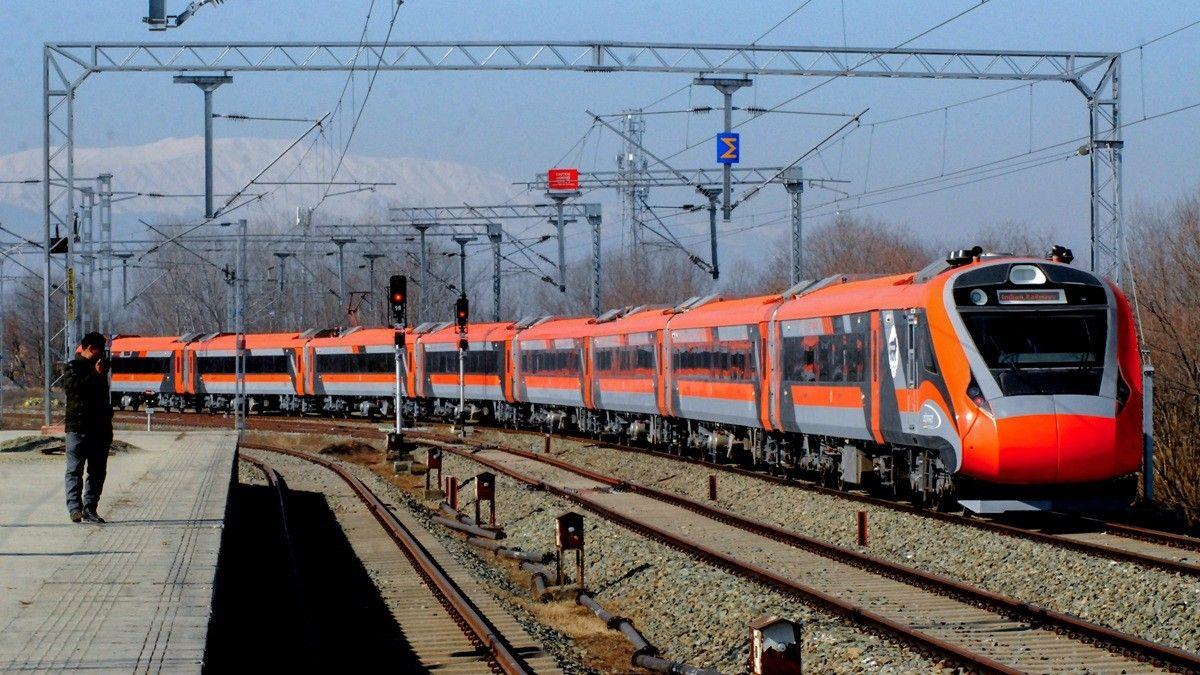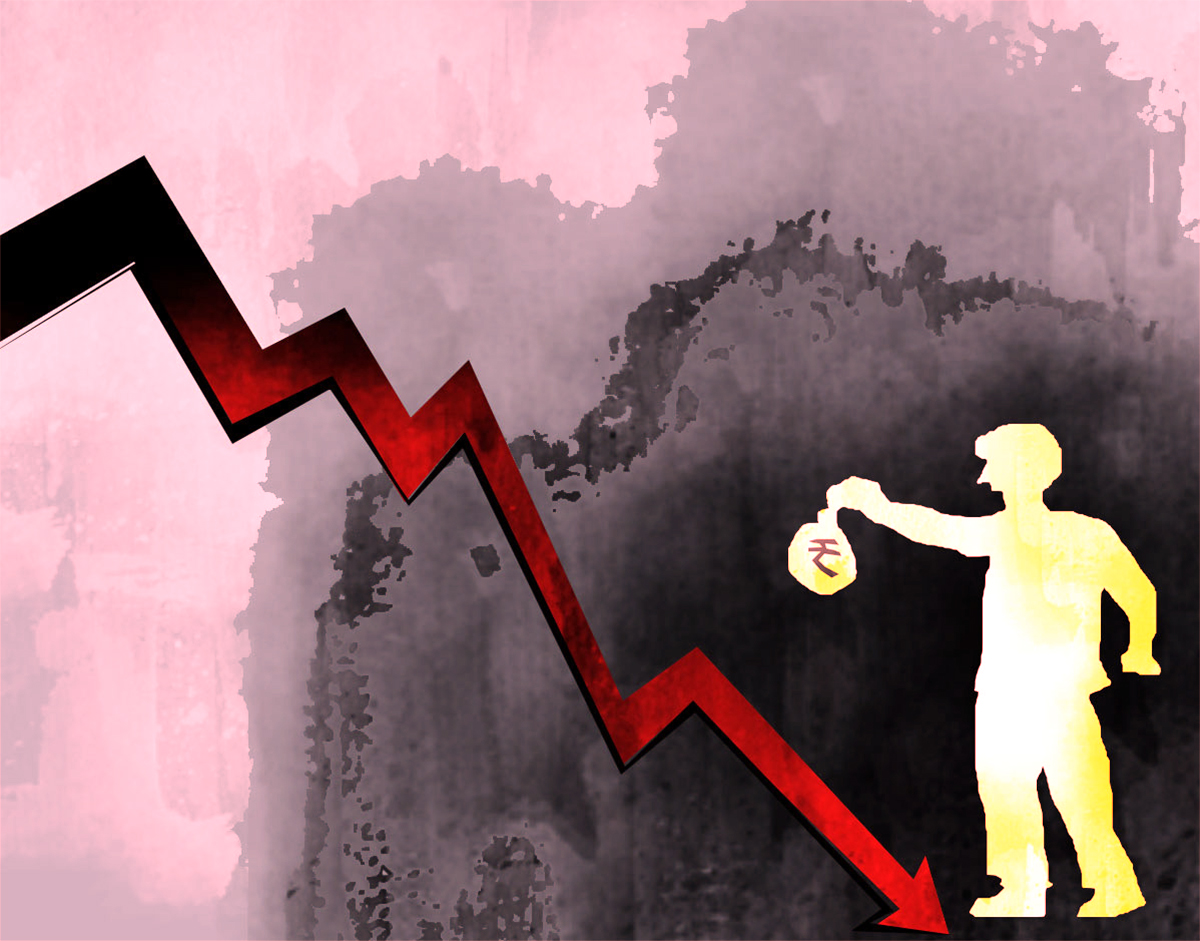Experts say Indian Railways must grow its share in the freight market to remain financially sustainable.

IMAGE: Kindly note that this image has been posted for representational purposes only. Photograph: ANI Photo
After nearly five years of frozen fares, Indian Railways nudged up ticket prices from July 1.
Though the increase, based on Union Budget estimates, will bring only limited relief to the national transporter’s strained finances, the burden on travellers has been kept minimal.
For those in air-conditioned coaches, the increase amounts to around ₹30 on a Delhi-Mumbai journey, with fares up by 2 paisa per km.
Similarly, travellers on Vande Bharat routes are now paying ₹10-₹14 more for shorter trips.
Meanwhile, passengers in non-AC coaches on Mail and Express trains are witnessing a fare increase of 1 paisa per km.
By the Railways’ own projections, this modest adjustment could generate around ₹1,500 crore in additional revenue. For perspective, the then newly elected NDA government in 2014-15 had implemented a far steeper 14.2 per cent fare hike, bringing in roughly ₹8,000 crore for the transporter.
A fare revision was also rolled out in 2020, nearly twice as high as the one for FY26. But, this was succeeded by events like the nationwide Covid-induced lockdown and travel restrictions.
Based on pre-pandemic projections in the 2020-21 Budget, the Railways had expected to rake in around ₹2,100 crore from the hike. It had anticipated a ₹5,000 crore (9 per cent) boost in revenue with a 1 per cent uptick in passenger kilometres.
In that context, experts are dubbing the latest hike “modest”. This is a step toward correcting fare distortions, said Lalit Chandra Trivedi, former general manager of East Central Railway.
Indian Railways has long operated with a significant gap between cost and recovery in its passenger services, he said, adding, this helps reduce excessive cross-subsidisation from freight earnings.
In February’s Union Budget, projected revenue from the passenger segment was pegged at ₹92,800 crore, an 11 per cent rise from the ₹82,000 crore revised estimate for FY25. The AC three-tier class alone is expected to generate ₹37,115 crore this year, marking a 23 per cent increase from last year’s revised estimates.
According to a senior railway official, this hike was long on the cards.
“It’s not just about improving the operating ratio,” the official said. “The losses during Covid years had affected operational stability. The Railways had to take a special loan from the finance ministry, and while there’s a moratorium now, that loan still needs to be paid back.”
During the pandemic, the finance ministry extended a ₹79,000-crore loan to Indian Railways. Repayments were due to begin in FY25, but a two-year moratorium has since been granted.
Even without the loan, former railway officials argue, the fare revision was overdue. Passenger services are still heavily subsidised through freight earnings, while the Railways also covers its pension and salary obligations from internal revenues. In the FY26 Budget, ₹68,602 crore has been earmarked just for pension payments.
Freight must carry more weight

IMAGE: Kindly note that this image has been posted for representational purposes only. Photograph: ANI Photo
Still, tightening the books will require more than fare tweaks. Experts say Indian Railways must grow its share in the freight market to remain financially sustainable.
“The Railways’ modal share of freight transportation has fluctuated over the years,” said Aniket Dani, director at Crisil Intelligence. “It hovered around 26-27 per cent in 2014-15, dropped to 22-23 per cent between 2017 and 2022, and has now rebounded to 26 per cent in 2025 — thanks in part to the Dedicated Freight Corridor.”
As more trains begin operating on the corridor, freight volumes have climbed sharply, from 1,905 gross tonne-km (GTKM) in 2021 to 119,129 GTKM in 2024. With more corridors coming online, Dani expects the modal share to rise further.
Under the National Rail Plan, the target is ambitious: Carry 45 per cent of national cargo by 2030.

IMAGE: Kindly note that this image has been posted for representational purposes only. Photograph: ANI Photo
Progress has been slower than expected, but the railway remains the cheaper option for bulk cargo.
“Costs vary by mode of transport. But historically, the railway has been more cost-effective. On average, moving one tonne of freight by rail costs ₹1.36 compared to ₹2.50 by road,” Dani added.




